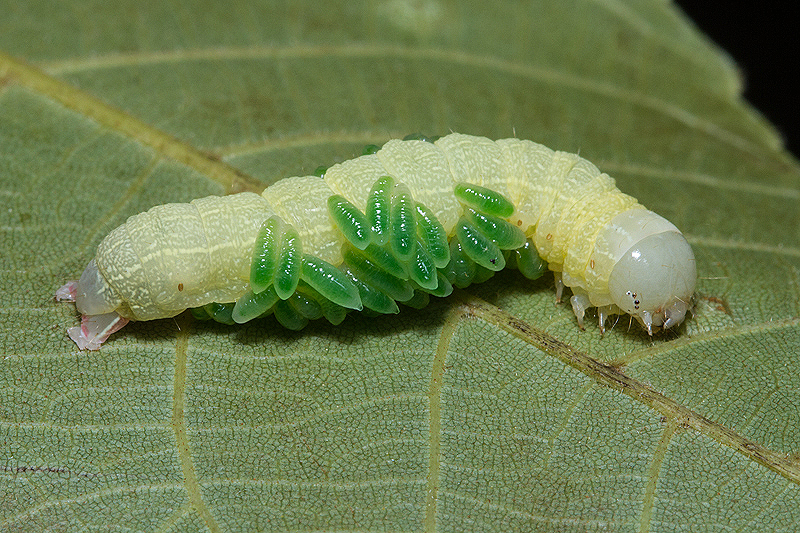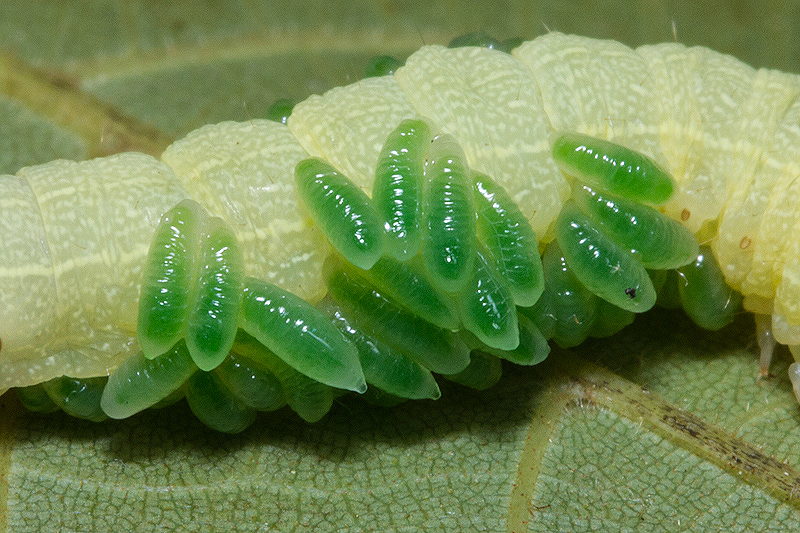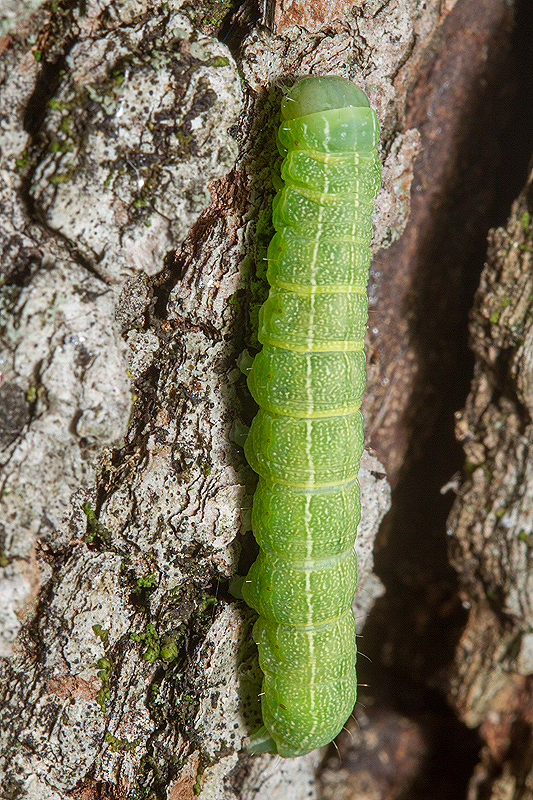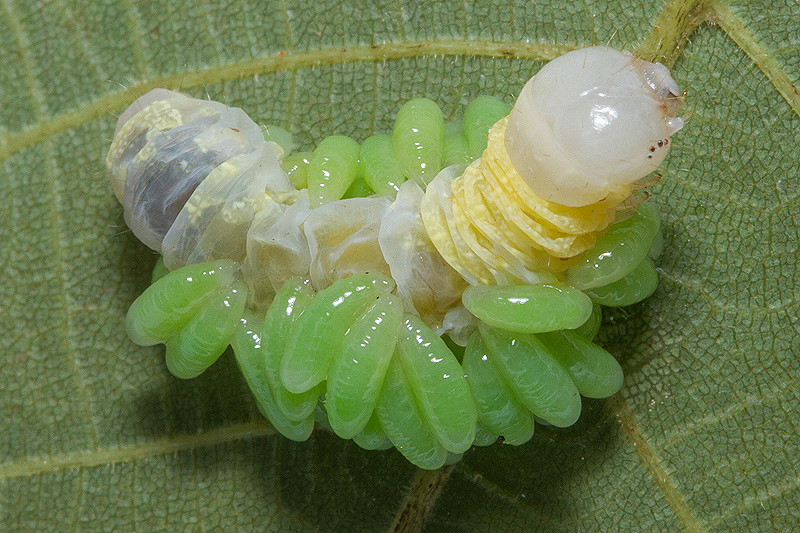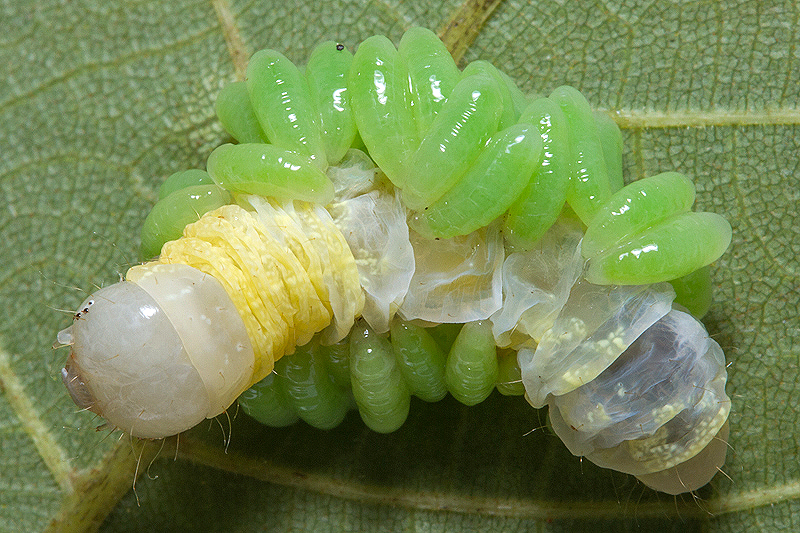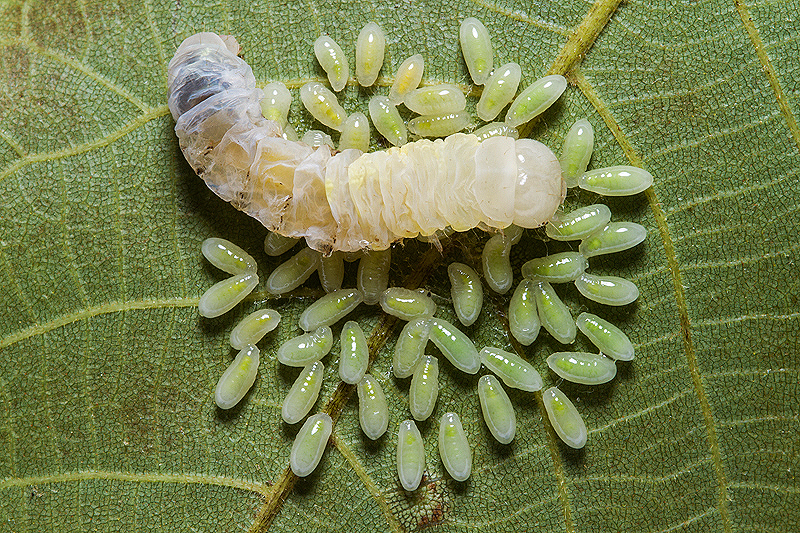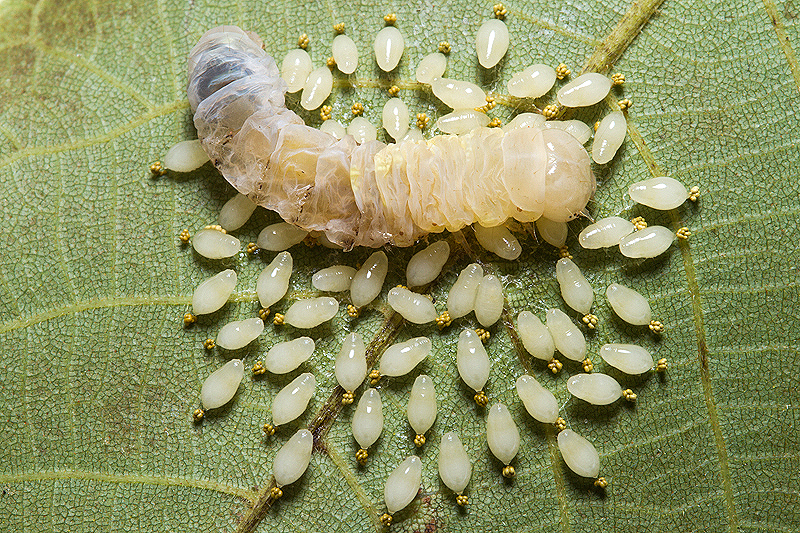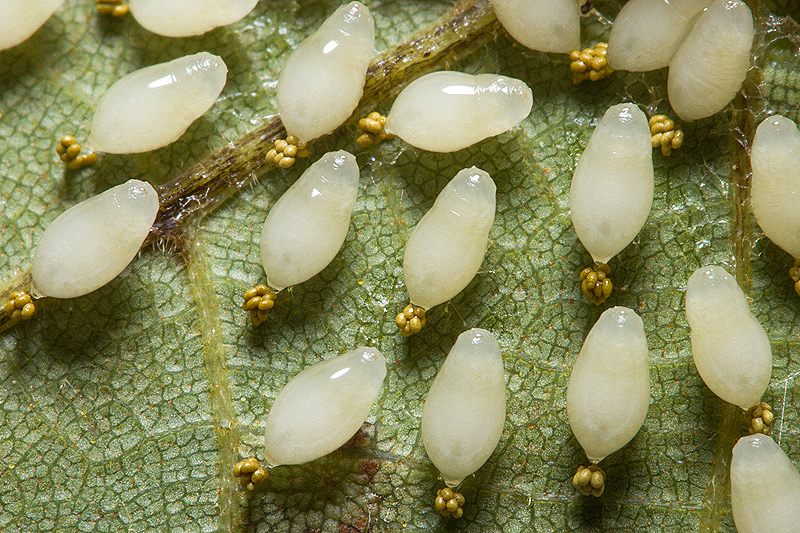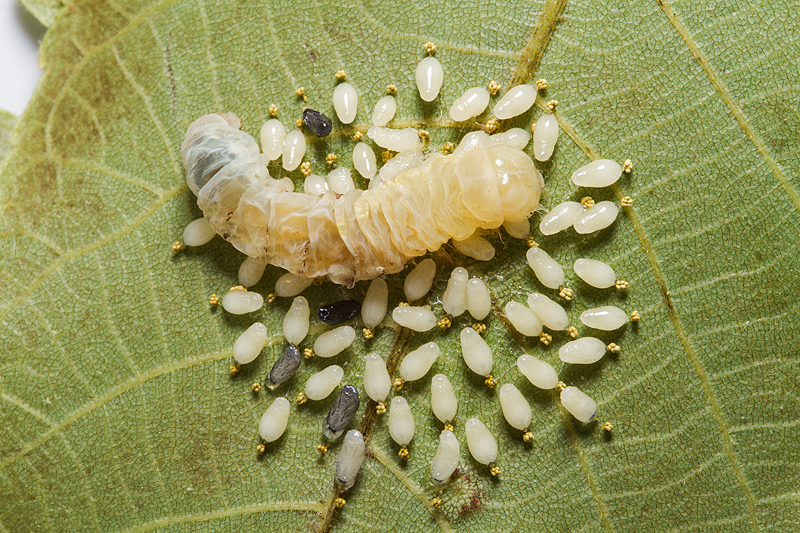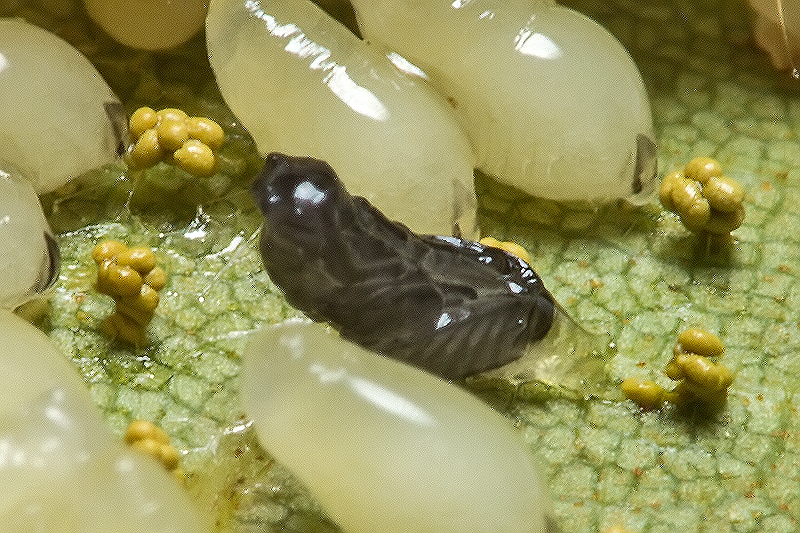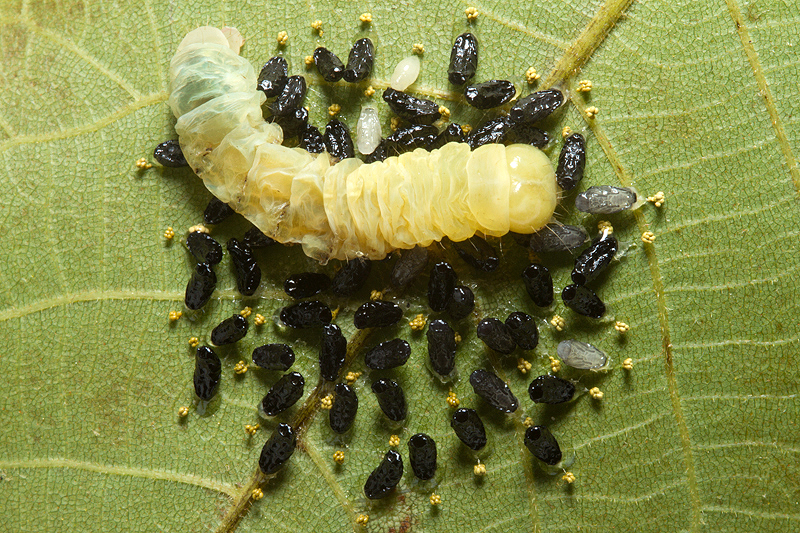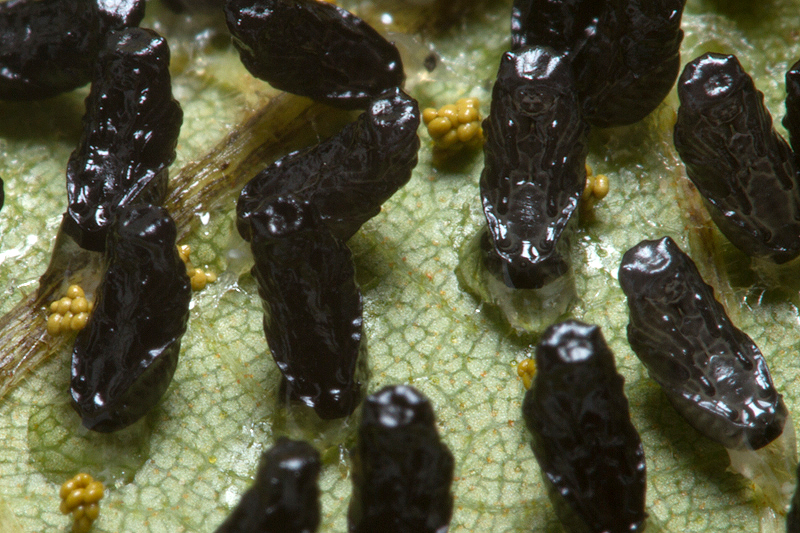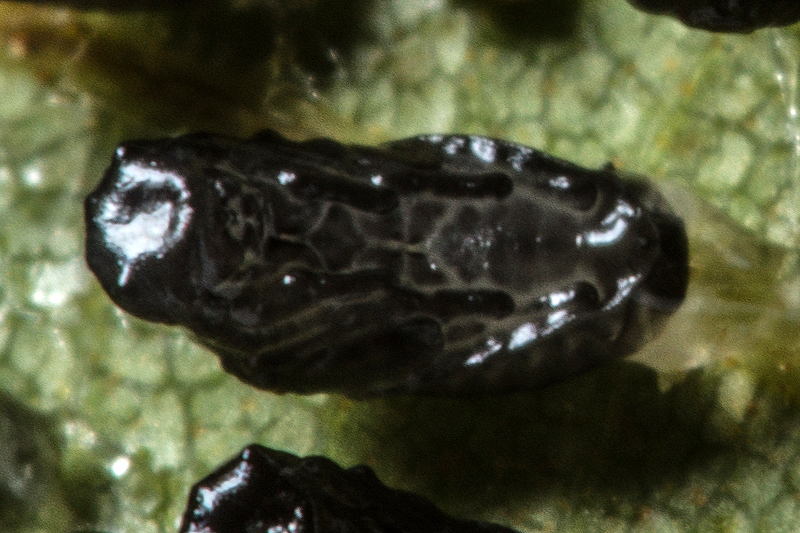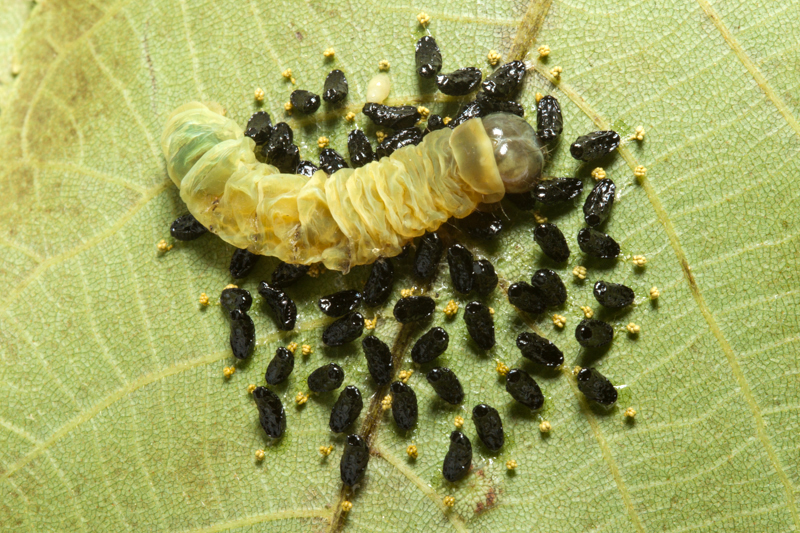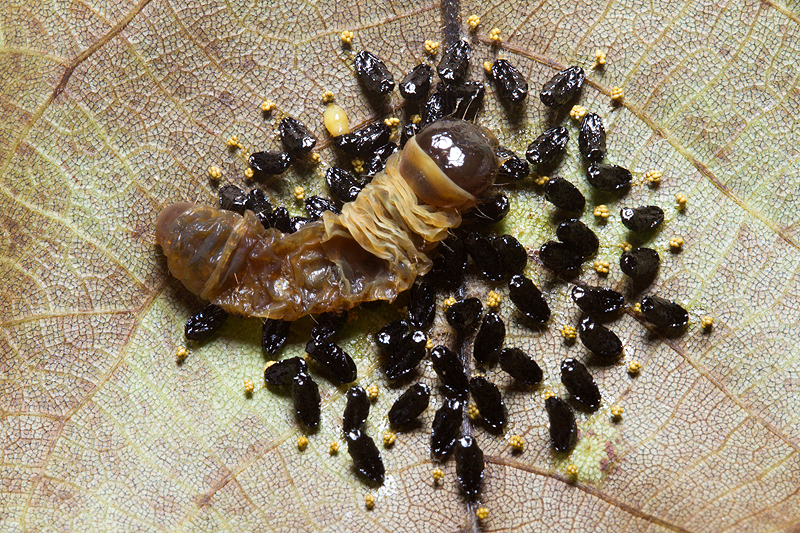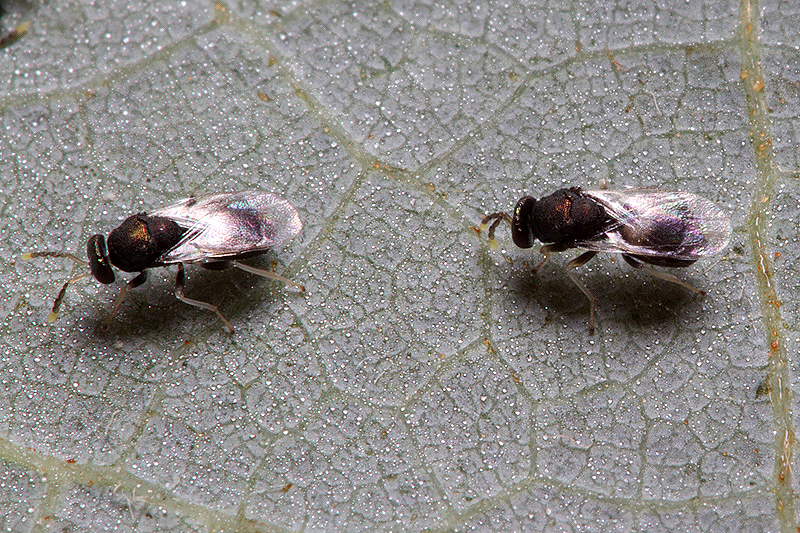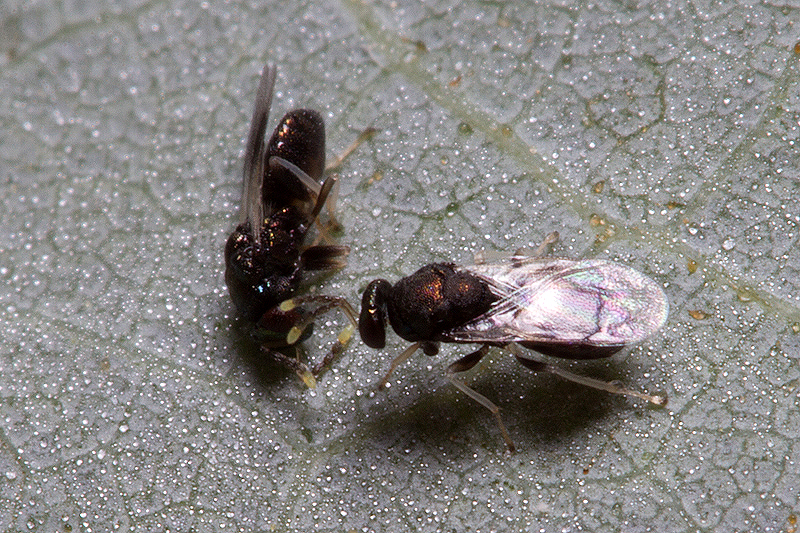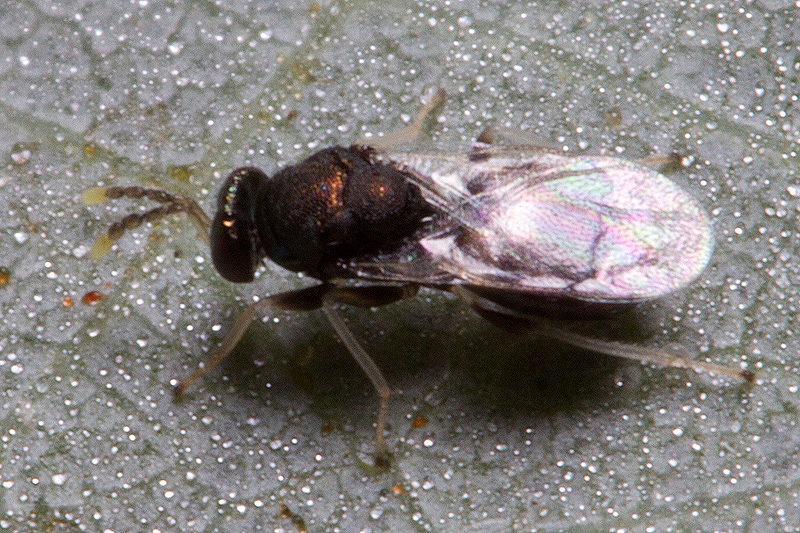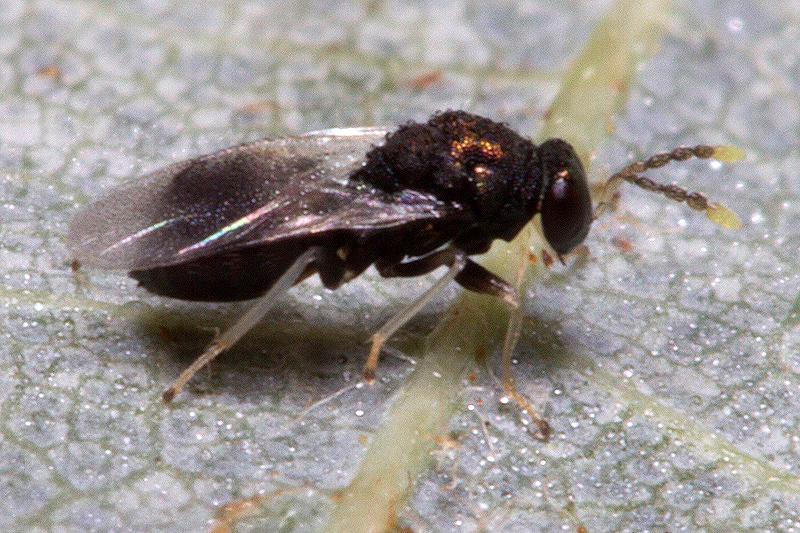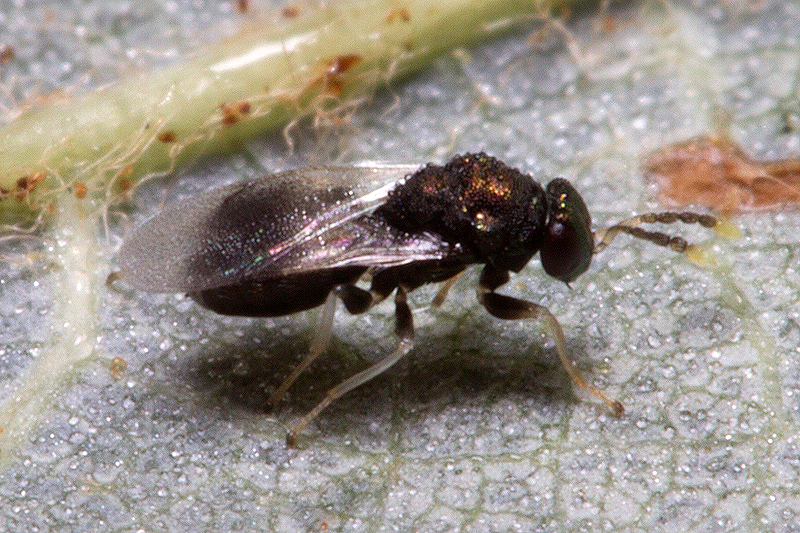Eulophid Wasp Parasitoids of a Distinct Quaker (Achatia distincta) caterpillar - July, 2014, Amston, Connecticut Stan Malcolm Photos |
mAir Line Trail Home Page |
July 5th. 9:00 A.M. - I found this Distinct Quaker (Achatia distincta) moth caterpillar and bright green parasitoid larvae on a fallen leaf (hickory, I think). Dr. Mike Singer of Wesleyan University suggests that the wasps may be eulophids (Family Eulophidae). See: http://en.wikipedia.org/wiki/Eulophidae Based on this BugGuide link, I think he's right. (January 12, 2015: In fact he was right as confirmed by Dr. Michael Gates of the USDA and Smithsonian Institution's National Museum of Natural History. They are Eulophus anomocerus Crawford) |
The caterpillar is abnormally pale - it almost seems as if the wasp larvae are sucking the color out of it. |
This is what the Distinct Quaker (Achatia distincta) moth caterpillar should look like. |
I collected the caterpillar and parasitoids and will try to rear out the wasps. |
July 5th, 5:00 P.M. - 8 hours after the first photos were taken. The wasp larvae have grown while the caterpillar has shriveled up. |
|
July 6th, 11:00 A.M. - Their foor source exhausted, the wasp larvae have retreated from the cadaver. |
July 7th 7:00 A.M. - 46 hours since first photos of this parasitized caterpillar. As all tidy larvae do, it looks like the parasitoids have voided their guts prior to pupation. |
|
July 7th. 12:00 P.M. - 51 hours since first photos of this parasitized caterpillar. Some larvae have transformed into pupae and are now in varying degrees of darkening. Not obvious to me if larval skin is shed or remains as a very thin wrapper. |
|
Everything seems to be glued in place. |
July 7th. 3:00 P.M. - 54 hours since first photos of this parasitized caterpillar. All but one of the larvae have pupated; only a few have not darkened to black. Pretty good synchrony. (By 3:30, all but one were pupae and black.) |
Interesting that they all are oriented legs up. |
About as close as I can get with my camera - handheld with flash. |
July 8th, 6:30 A.M. - Roughly 70 hours since the start of this photo series. What's left of the caterpillar is beginning to rot (see head capsule). The wasp pupae are very dark, look dryer but still glued to the substrate, and appear to be in a "seated" position. |
July 12th, 8:30 A.M. - Still no sign of adults emerging. The caterpillar continues to rot, and the leaf is turning brown and drying up. |
July 13th. 7:00 P.M. - The adult wasps emerged sometime today. Bronze bodies with metallic green between the eyes. |
I'm at or beyond the limits of my camera/lens. |
I slowed them down in the refrigerator before attempting photos as they "awoke". Tomorrow, I'll examine more in hopes of distinguishing the sexes. |
July 14th. - Final attempt at photographing the wasps before preserving them for identification. The "beads" on their backs and wings are condensation, the result of taking them from the refrigerator into today's humid air. |
I saw no obvious sexual dimporphism. I thought their antennae might be different. Alternatively, perhaps all the wasps were of the same sex. |
|
